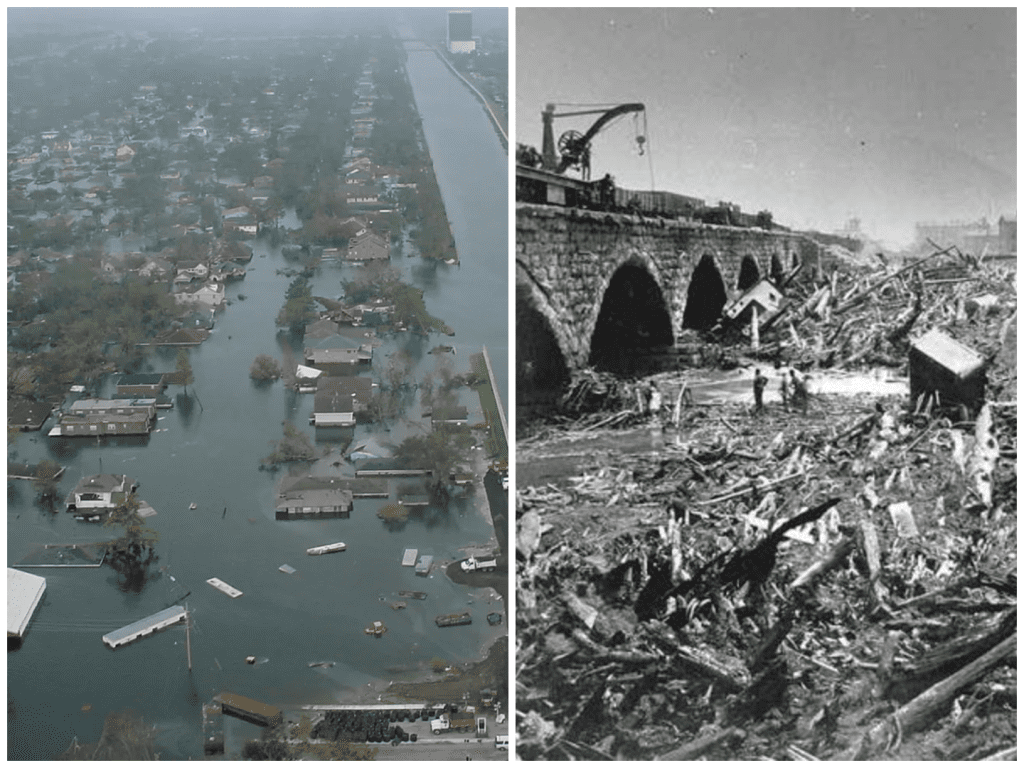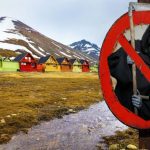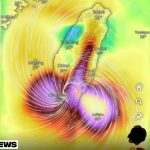From Galveston to Katrina — These 5 U.S. Floods Were So Devastating, Some Towns Never Recovered
In America, we’re used to the idea of storms. We know how to board up windows, how to track hurricanes, how to watch rivers rise on the news. But every once in a while, a flood hits that’s so powerful, so sudden, and so destructive that it doesn’t just damage homes — it changes history. These floods aren’t just weather events. They’re chapters. Whole generations remember them. Some towns never come back from them.
Floods are different from other disasters. They creep, they surge, and sometimes, they don’t leave when the skies clear. What you’ll read here isn’t just a list of storms — it’s five moments in U.S. history when water took over lives, land, and everything in between. The scars from these floods still run through cities, families, and memory. And some of them might surprise you.
📍 1. The Johnstown Flood (Pennsylvania, 1889)
This one wasn’t just deadly — it was almost unbelievable.
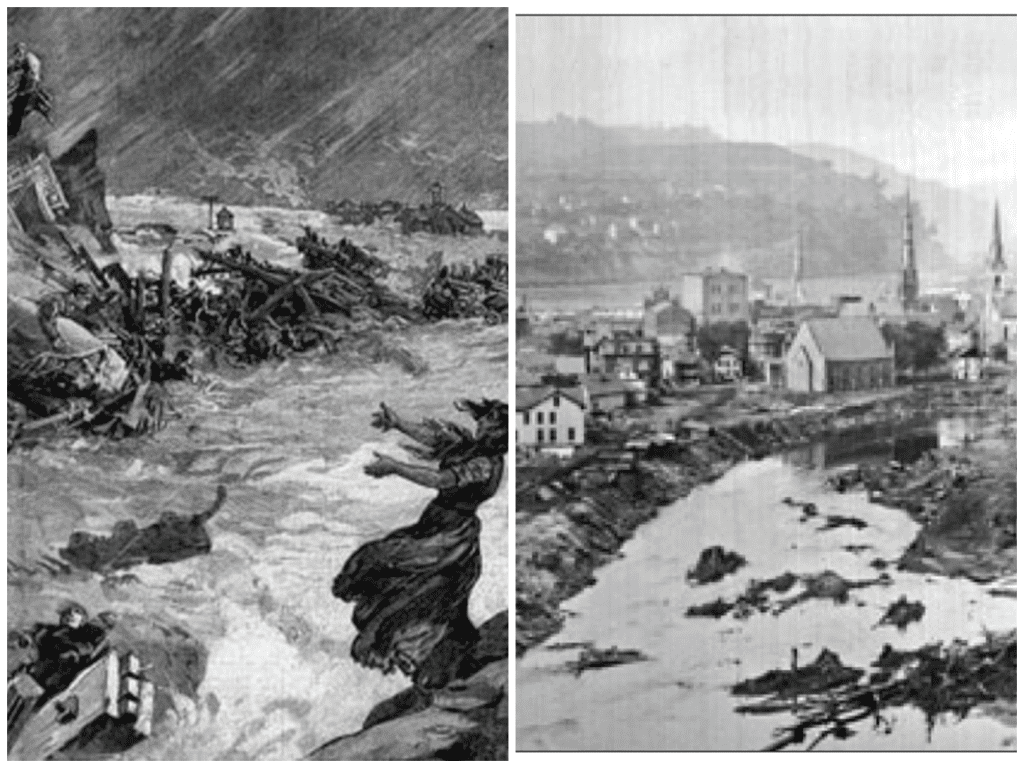
On May 31, 1889, after days of heavy rain, the South Fork Dam above the city of Johnstown collapsed. Within minutes, 20 million tons of water came crashing down the valley. What followed was a wave up to 40 feet high, carrying everything in its path — trees, homes, animals, and even locomotives. When the water slammed into Johnstown, it was moving faster than most people could run. Entire neighborhoods vanished. Some victims were found miles away. Others were never found at all.
By the end, over 2,200 people were dead. It remains one of the deadliest natural disasters in U.S. history. The city rebuilt, slowly, but the name “Johnstown” still brings a chill to those who know the story. It’s not just a flood. It’s a moment frozen in time — when a whole city was swallowed.
📍 2. The Great Mississippi Flood (1927)
This wasn’t just a flood — it was an ocean over land.
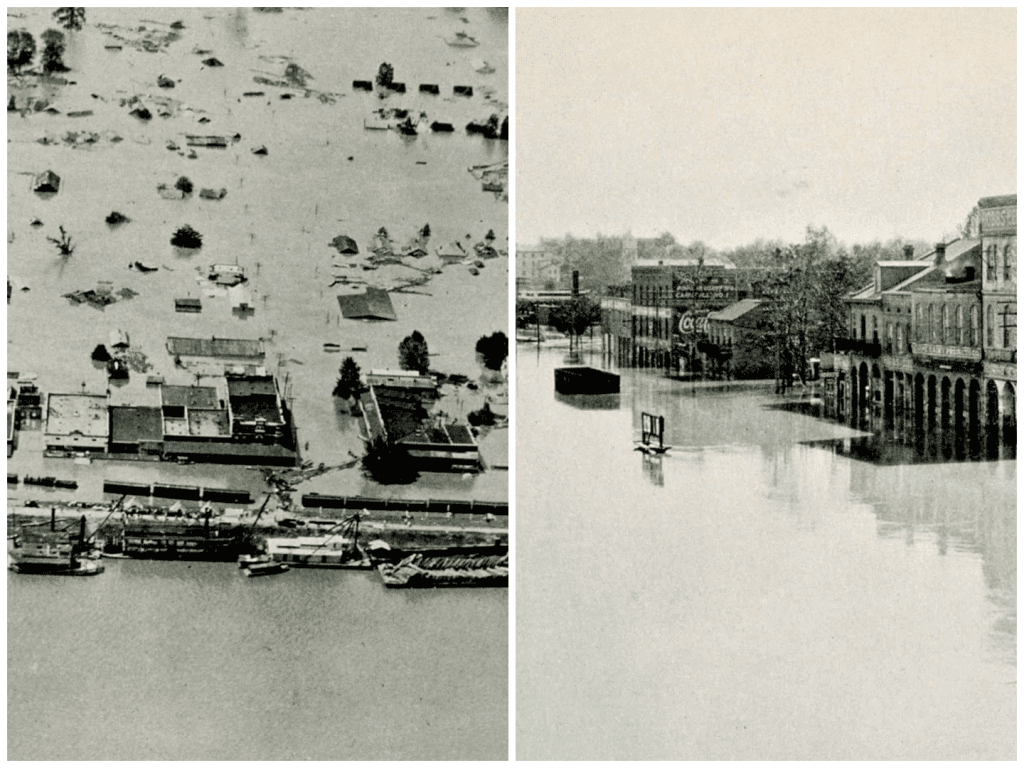
The Mississippi River is big. But in 1927, it became monstrous. After months of relentless rain, levees broke all along the river from Illinois to Louisiana. Entire states were underwater. Crops disappeared. Roads were washed away. The disaster flooded over 27,000 square miles — that’s roughly the size of West Virginia.
At least 500 people were killed, but the true number is likely much higher. Over 600,000 people were displaced, many of them poor Black families in the Deep South, who were hit hardest and helped least. The flood changed the way America viewed disaster response and also pushed thousands of people north — shaping what would later be called the Great Migration.
Even now, you can see the effects. Towns that vanished. Laws that changed. Music, stories, and pain that still echo. When people say, “The river is rising,” they remember 1927.
📍 3. Hurricane Katrina (New Orleans, 2005)
For a whole generation, this is the flood they’ll never forget.
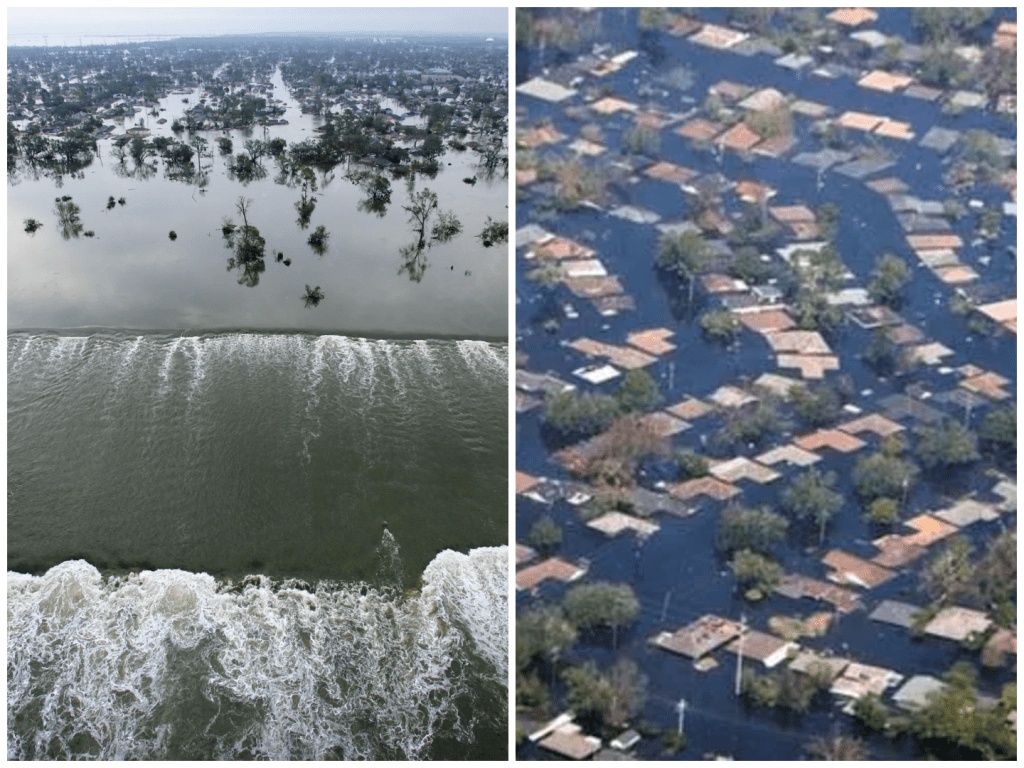
When Hurricane Katrina made landfall, most people expected wind damage. But it was the levees that gave out — and when they did, 80% of New Orleans went underwater. Entire parishes vanished. People were stranded on rooftops. Hospitals lost power. For days, the city waited — for help, for helicopters, for hope.
The death toll? Over 1,800 lives lost. But the emotional toll was just as deep. The images of families trapped, of the Superdome packed with survivors, of neighborhoods turned into brown water basins — they’re burned into America’s memory. The flood exposed not just weak infrastructure, but deeper wounds in how our country responds to disaster, race, and poverty.
New Orleans has fought to rebuild, and parts of it shine again. But others are still rebuilding, still carrying trauma, and still telling their stories.
📍 4. The Central Texas Flood (July 4–5, 2025)
This is the flood that’s still fresh. The one people are still talking about — and living through.
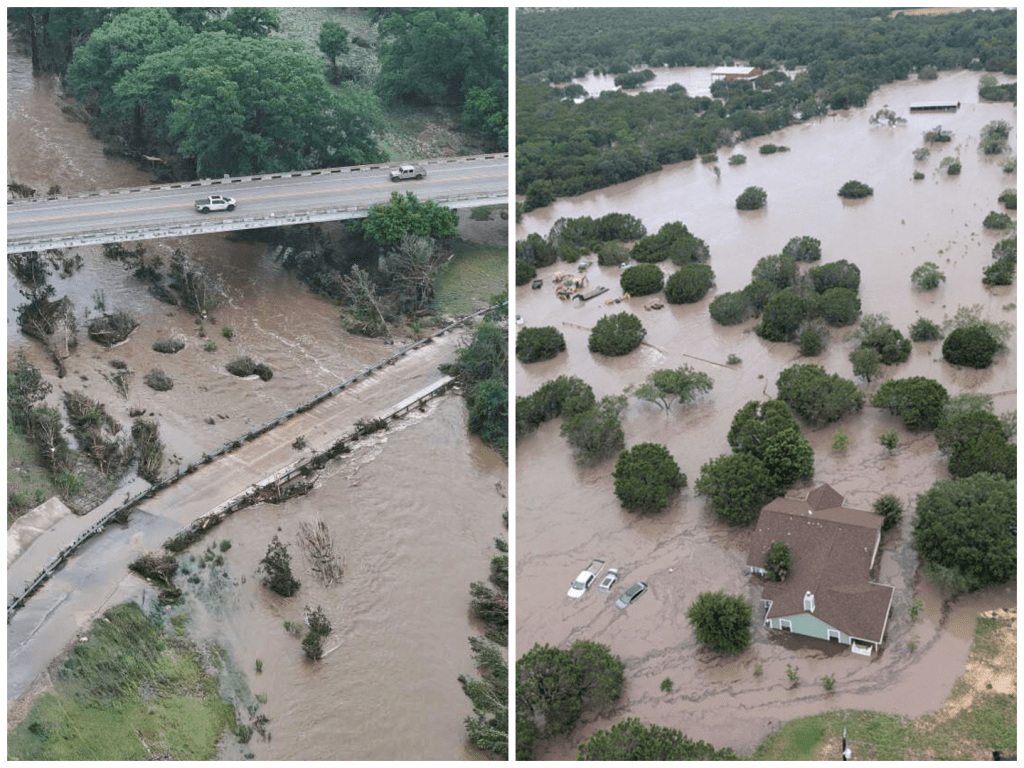
On what was supposed to be a day of celebration, the skies over Kerr County, Texas, opened. In just a few hours, 10 inches of rain fell. The Guadalupe River exploded. Campsites were swept away. Cars floated. Entire roads crumbled. By the next morning, entire communities had gone silent.
The flood left at least 70 people dead, including dozens of children. And even more devastating: it hit in the dark, when people were sleeping, celebrating, or simply unaware.
But what followed was something different. Even before the water left, neighbors helped neighbors. Volunteers showed up with boats, blankets, and food. Kids carried bottled water door to door. Texas, in its toughest moments, showed what unity really looks like.
The recovery has only just begun. But one thing is clear: this flood will leave a mark on Texas forever. And for the people who lived through it, it’s not over — it’s just the beginning of a long road back.
📍 5. The Big Thompson Canyon Flood (Colorado, 1976)
This one hit without warning — and with a force nobody saw coming.
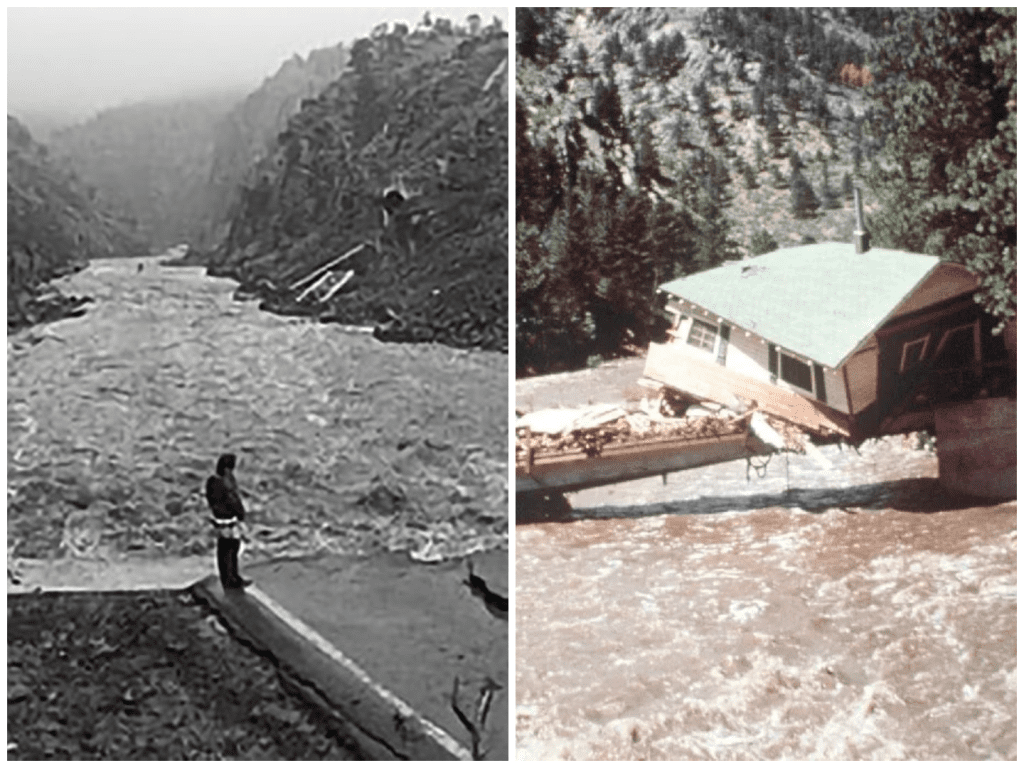
On July 31, 1976, during Colorado’s tourist season, a massive thunderstorm parked itself over the Big Thompson Canyon. In just one hour, 12 inches of rain fell. That might not sound like much until you realize the canyon funneled it into a narrow, fast-moving wall of water.
Campers and drivers had no chance. Cabins were torn from foundations. Cars were thrown like toys. People climbed trees to survive. In total, 143 people died, making it Colorado’s deadliest flood.
To this day, survivors say they still wake up when it rains. And the canyon, as beautiful as it is, holds that tragic history in every curve.
The Water Always Leaves, But the Stories Stay
These floods weren’t just acts of nature — they were moments that tested everything: government systems, rescue plans, family bonds, and faith. But in each story, there’s something else too — something bigger than disaster. It’s the way people come together. The way cities refuse to stay broken. The way survivors, even in the darkest water, find ways to float.
From Pennsylvania to Texas, from 1889 to 2025, the lesson is the same: water can crush buildings, but it can’t crush human spirit.
And that’s what makes these floods unforgettable.

Lena Carter is a travel writer and photographer passionate about uncovering the beauty and diversity of the world’s most stunning destinations. With a background in cultural journalism and over five years of experience in travel blogging, she focuses on turning real-world visuals into inspiring stories. Lena believes that every city, village, and natural wonder has a unique story to tell — and she’s here to share it one photo and article at a time.
